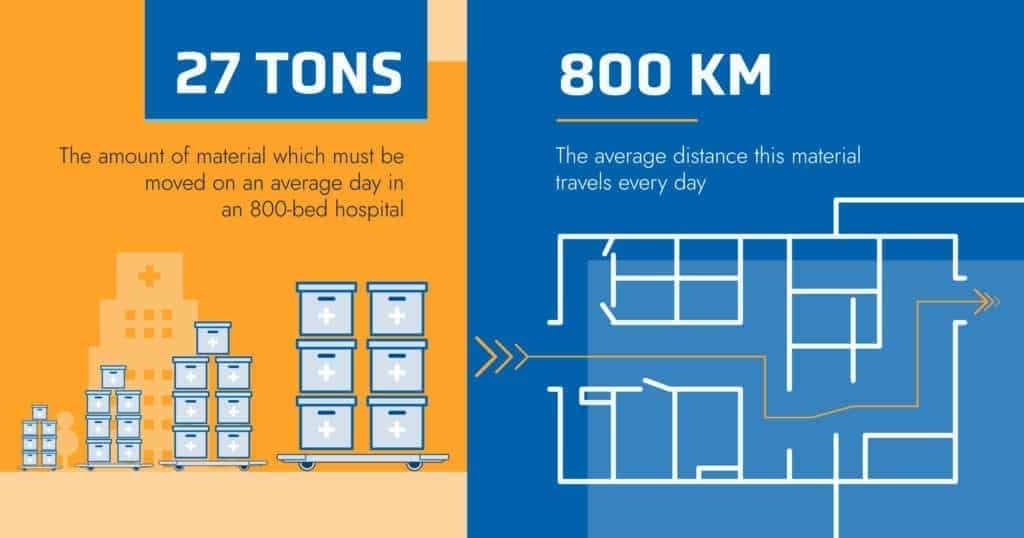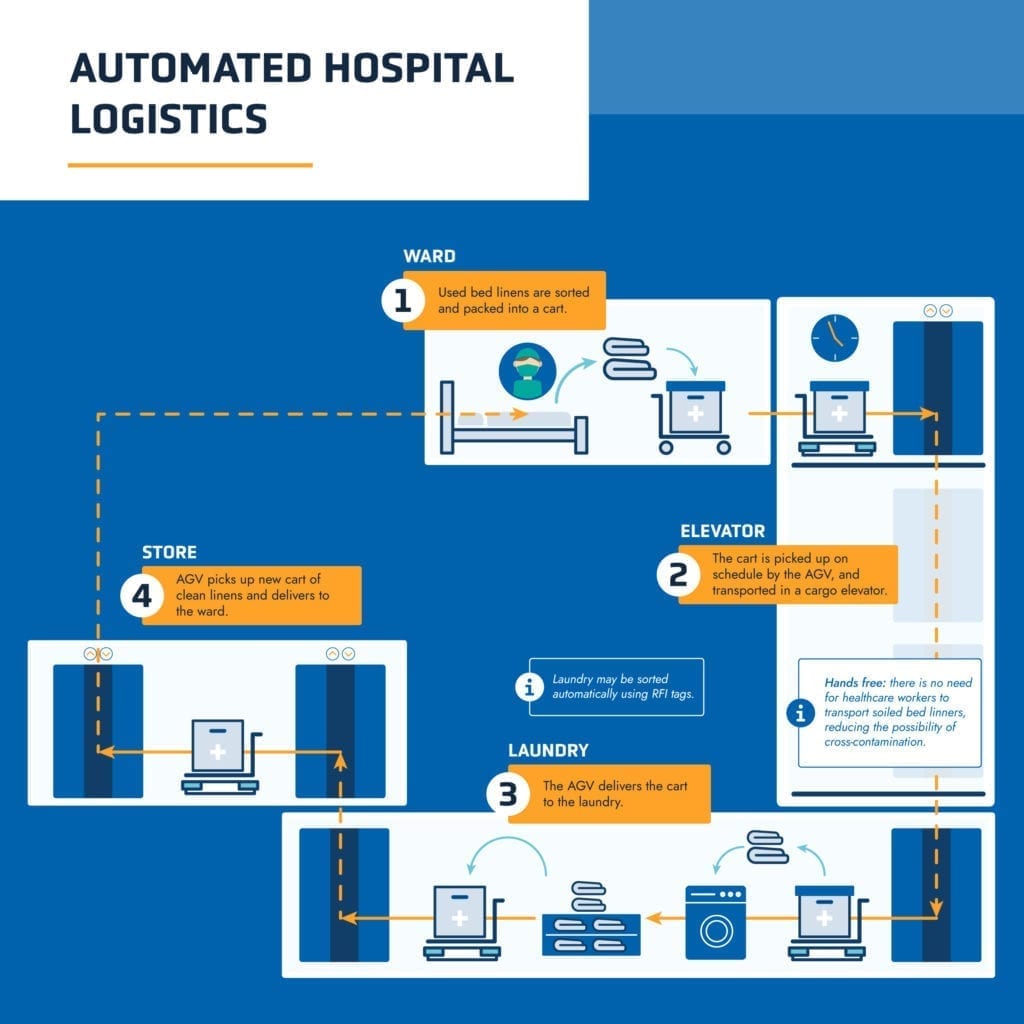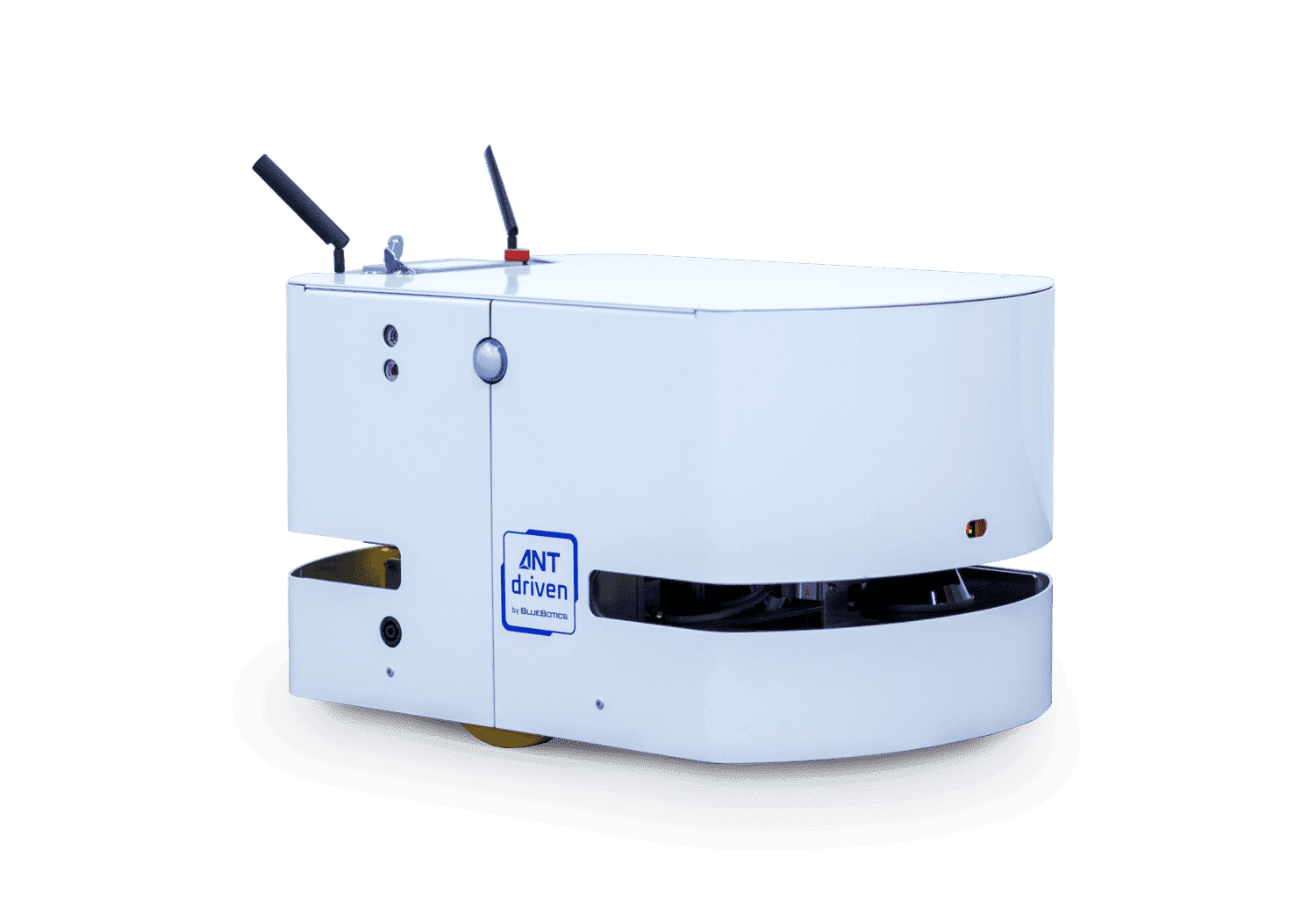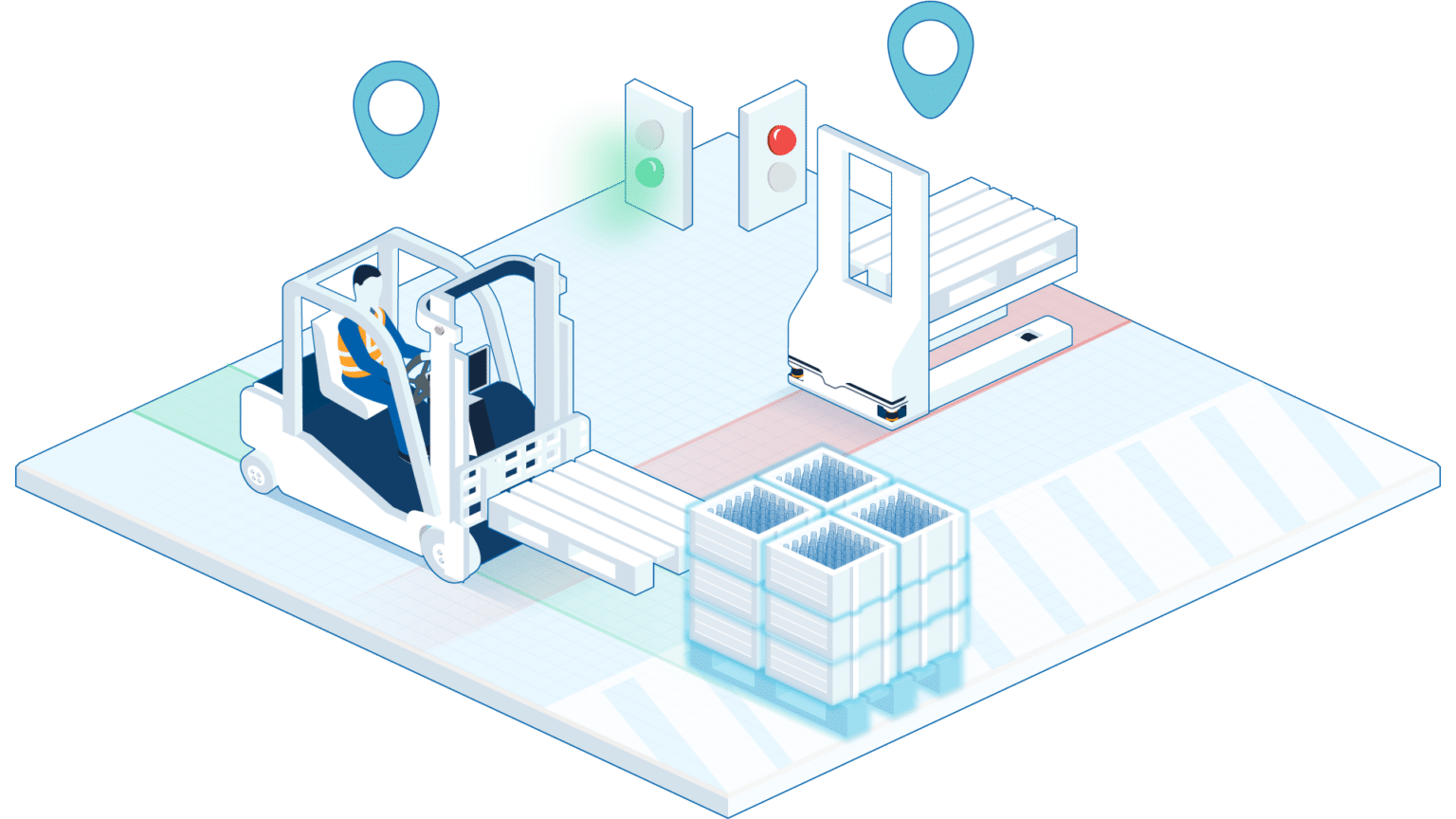Automated hospital logistics: How AGVs are keeping PPE moving
The COVID-19 pandemic has put unprecedented strain on hospitals and care facilities. But a recent push towards automating hospital logistics has freed up both healthcare workers and support staff to continue the urgent work of fighting the pandemic.
Automating hospital logistics: AGVs & PPE
A modern hospital or clinic handles a huge amount of internal transportation daily.
A 200-bed hospital – the typical size of an urban, non-teaching hospital in the US1 – transports an average of six tons of materials per day over a total distance of about 60 kilometres.
As hospitals get bigger, so do the logistical challenges: an 800-bed hospital may handle up to 27 tons of materials every day, covering a distance of about 800 km.

Clean and efficient transport is essential to safeguard the integrity and hygiene of the materials being carried in order to protect patient health.
An AGV logistics system can handle material transportation very efficiently, freeing up valuable resources for medical activities – especially valuable today, when strict social distancing guidelines and limited staff numbers are straining internal resources.
Keeping personal protective equipment (PPE) moving
One hospital in Garbagnate Milanese, Italy, employs AGVs to automate its internal logistic processes. The 57,000 m2 facility has over 500 beds and its backend logistics are handled by 12 AGVs that transport material – including meals and medication, PPE and waste material – to 147 reception stations throughout the hospital.
The AGVs used are bi-directional mobile robots by Oppent. These EVOcarts slide easily under carts and also work with elevators and automatic doors on-site. And because they are self charging, the entire AGV PPE logistics system is hands-free.

The robot’s movements are controlled by Autonomous Navigation Technology (ANT), by BlueBotics, which uses permanent features in the environment — such as walls or doorways — as references, to ensure each vehicle knows where exactly it is.
This approach means an AGV installation does not require expensive infrastructure changes, such as inductive wires laid in the floor or triangulation reflectors installed on the walls, in order for the robots to navigate effectively.
The AGVs are quickly installed with ANT lab software and modifying routes is even simpler. As a result, installations are simple and economical to set up and maintain, whether a single automated guided vehicle or a large fleet. Once set up, users can work with the robots via user-friendly ANT server software, or the system may be linked to existing hospital management programs through an API.
A built-in AGV safety system, using specific certified laser scanners, can identify any obstacles along a vehicle’s path and adjust its movement accordingly, with the AGVs autonomously handling obstacles either by adapting their speed to avoid emergency situations (path following) or moving around them (obstacle avoidance). Oppent’s EVOcarts have a programmable speed of 0.10 to 2.0 meters per second and respect the safety regulations ISO 3691-4.
Automating for the future
The COVID-19 pandemic has highlighted the essential work of healthcare professionals and support staff. Automating hospital logistics can literally take a load off their backs, freeing them while safeguarding patient health.
Thinking about automation? Discover AGVs like the cleanroom-ready mini™ lite.
A version of this article was first published in Automation Magazine.

Let's get Started
Take the first step to automating your vehicle.
Schedule a call with our expert team today.
